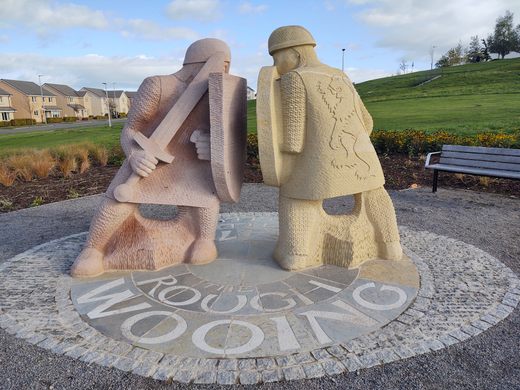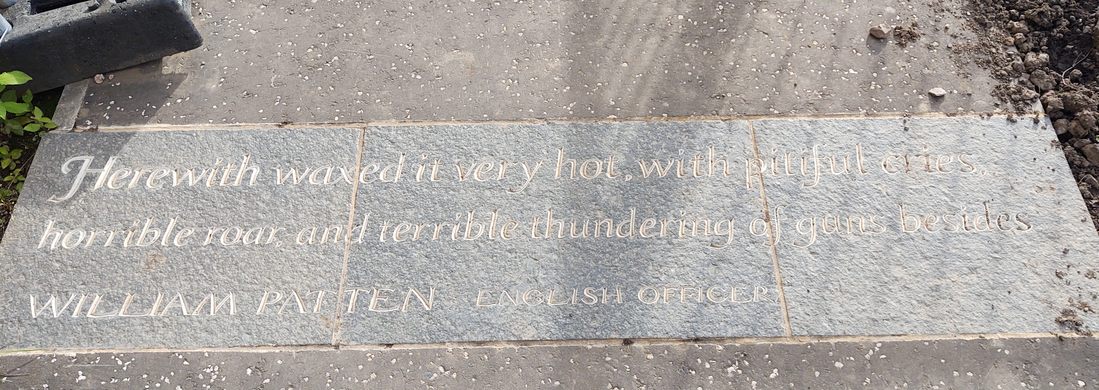AO Edited
Rough Wooing Memorial
Sculptures depicting Scottish and English soldiers in battle honor a 16th-century conflict.
The Rough Wooing was the last war fought between England and Scotland before their crowns were joined in 1603. The union came at the cost of a series of brutal 16th-century clashes. The reason for all the bloodshed was the English attempt to force the betrothal, or wooing, of Mary Queen of Scots, then an infant, to the English heir Edward IV, then a child.
After the Scots suffered a defeat at the Battle of Pinkie Cleugh in 1547 near Musselburgh, their fate was sealed. In 1998, a memorial stone was put in place overlooking the farmland believed to be the site of the battle. In 2021, a memorial to the battle was unveiled near one of the sites where it happened. Sculptor Gardner Molloy carved larger-than-life stone figures depicting an English and a Scottish soldier locked in battle. Both soldiers are carved from distinctive sandstone from the North of England. The Scottish soldier, who bears Saint Andrew’s cross on his shield, is comprised of yellow stone from North Yorkshire, while the English soldier, who wears Saint George’s cross, owes his rosy hue to stones hewn in Northumberland.
Surrounding the two soldiers are stone slabs marked with the date 1547 or quotations relating to the violent union. “I did not so much mislike the match as the rough manner of wooing,” quipped George Gordon, the fourth Earl of Huntly. Nearby, lie the more solemn words of William Patten, an English officer: “The river ran all red with blood.”
Know Before You Go
The memorial can be visited at any time and commemorates the 474th anniversary of the battle.






























Follow us on Twitter to get the latest on the world's hidden wonders.
Like us on Facebook to get the latest on the world's hidden wonders.
Follow us on Twitter Like us on Facebook